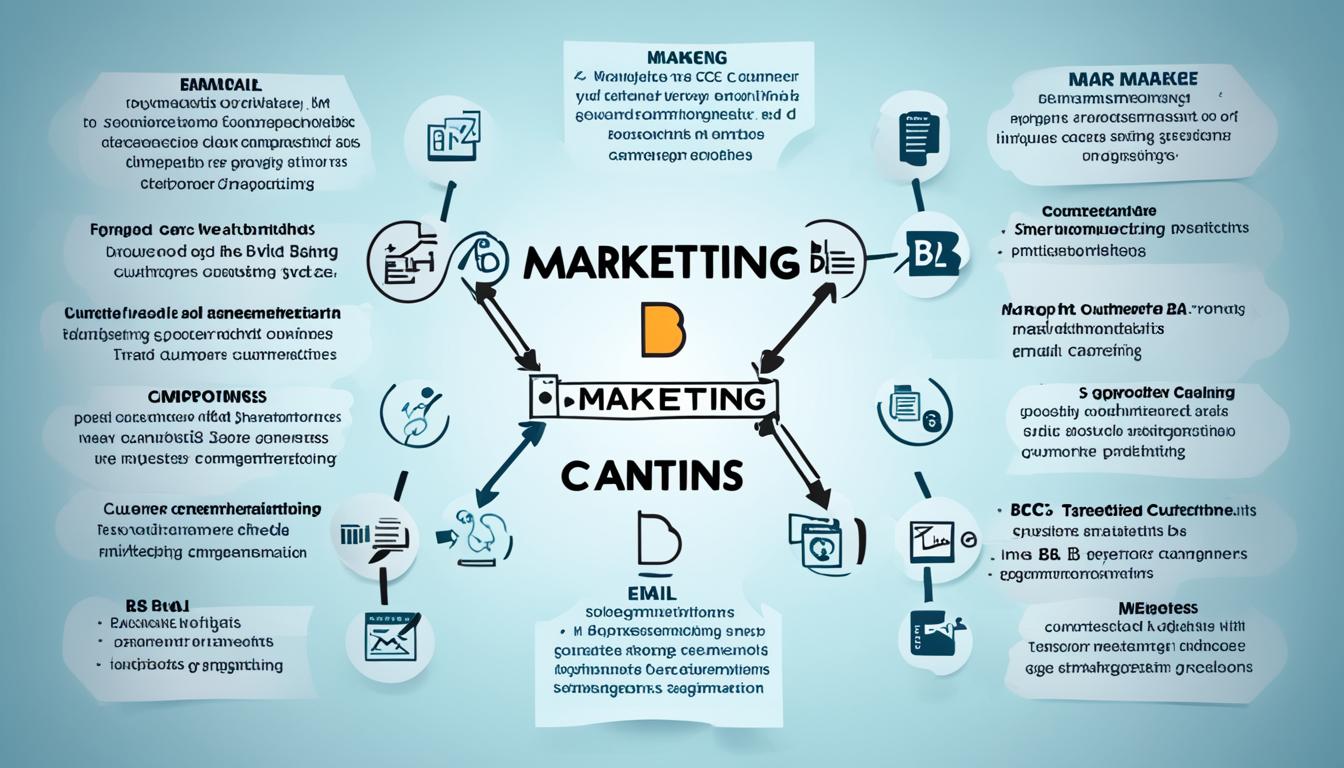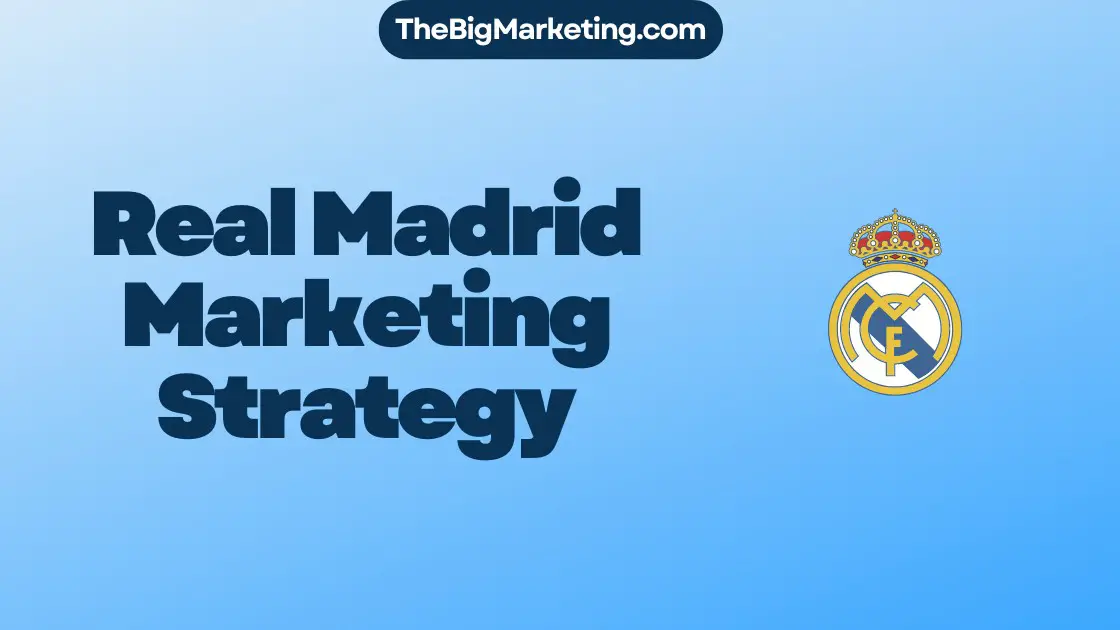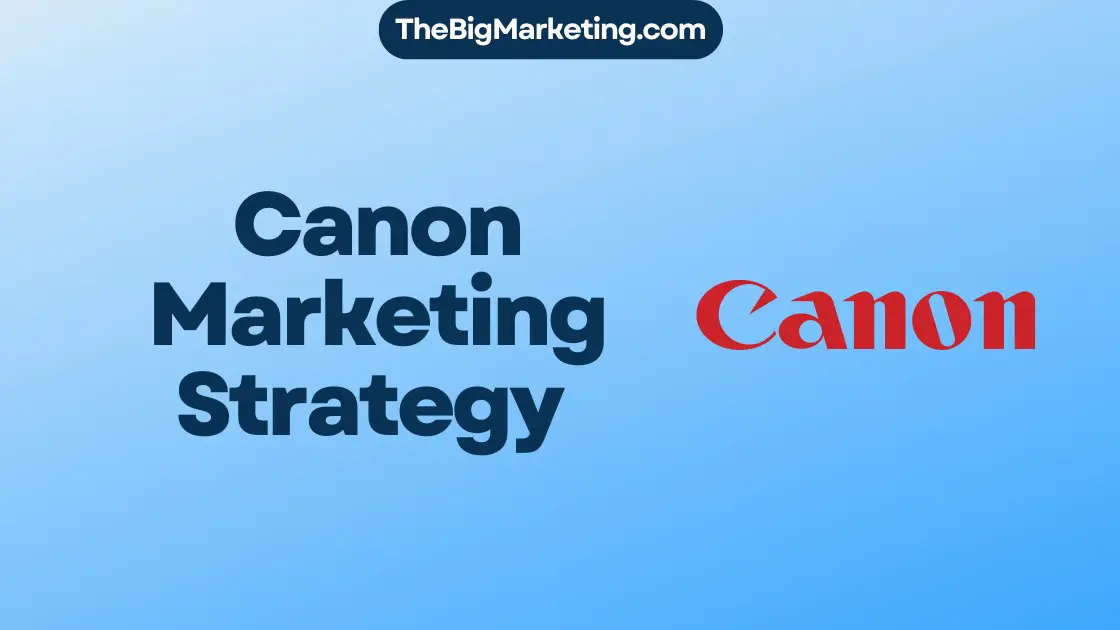The world of video games is evolving rapidly, with an estimated 3.3 billion gamers worldwide by 2024. This presents a unique challenge for EA, one of the most influential video game companies. In a recent interview, David Tinson, Chief Marketing Officer at EA, highlighted the company’s focus on differentiation, expectation, and execution in order to meet the needs of its diverse and growing community of gamers. With a strong emphasis on building trust and delivering high-quality experiences, EA has prioritized developing a team of passionate marketers, delivering innovative work, and creating a seamless experience across platforms and channels.
Key Takeaways:
- EA Sports is adapting to the evolving marketing landscape by prioritizing differentiation, expectation, and execution.
- Building trust and delivering high-quality experiences are key priorities for EA’s marketing strategy.
- EA is focused on team development and delivering innovative work to meet the needs of its diverse gaming community.
- The company is committed to marketing inclusion and diversity, ensuring an inclusive gaming experience for all players.
- EA’s SWOT analysis identifies its strengths, weaknesses, opportunities, and threats in the market.
EA’s Marketing Priorities for 2022
Building trust and delivering a total brand experience are the top priorities for EA’s marketing team in 2022. To achieve this, EA is focused on three key areas: team development, delivering innovative and creative work, and operating in an integrated way across platforms.
Firstly, team development plays a crucial role in EA’s marketing strategy. By building a diverse and passionate team, EA aims to reflect the communities it serves. This approach ensures that the marketing efforts resonate with players of different backgrounds and interests, fostering a sense of inclusivity and connection.
Secondly, delivering innovative and creative work is essential in today’s complex marketing landscape. EA recognizes the need to push boundaries and constantly evolve to meet the expectations of its audience. By developing groundbreaking campaigns, immersive experiences, and engaging content, EA establishes itself as a leader in the industry.
Lastly, an integrated approach to marketing ensures that players have a seamless experience across multiple platforms and channels. With the rise of digital media, EA leverages technology to create cohesive brand experiences, allowing players to engage with their favorite games wherever and whenever they choose.
By prioritizing team development, delivering innovative work, and operating in an integrated manner, EA aims to build trust and provide an exceptional brand experience. These marketing priorities align with EA’s overarching strategy to connect with players on a deeper level and solidify its position as a leader in the gaming industry.
Marketing Inclusion and Diversity at EA
EA is dedicated to making a positive impact through its marketing efforts. The company’s commitment to marketing inclusion and diversity is evident through the establishment of the Marketing DE&I Council. This council aims to increase diversity representation and retention within EA’s marketing team.
The Marketing DE&I Council focuses on several workstreams to foster inclusivity in marketing. It promotes allyship, inclusive design, inclusive research, conferences, and talent journey. These initiatives ensure that EA’s marketing efforts reflect the diverse communities it serves.
One of the key initiatives introduced by EA is the Positive Play Charter. This charter is designed to create an inclusive gaming experience for players. It includes accessibility-centered patents that aim to make games more inclusive for individuals with vision, hearing, speaking, or cognitive challenges.
Through these initiatives, EA strives to meet the needs of diverse populations and create a safe and inclusive gaming environment. By embracing marketing inclusion and diversity, EA is not only improving representation but also fostering an inclusive gaming experience for players of all backgrounds and abilities.
Evolution of Marketing in the Interactive Entertainment Industry
The interactive entertainment industry has undergone significant transformations in recent years, propelled by advancements in technology and changes in consumer preferences. From the era of physical discs to the rise of subscriptions, free-to-play models, and dynamic live services, the landscape of the industry has evolved at a rapid pace.
EA, a leading player in the interactive entertainment industry, has successfully adapted to these shifts by adopting a comprehensive approach that caters to the entire fan experience. The company recognizes that it is no longer just about creating and selling games but rather about engaging players through various stages, including creating, playing, competing, and watching.
With a wide range of active accounts across platforms and channels, EA has shifted its focus to be more player-centric. The company has embraced the power of its creator communities and leveraged their influence to connect with players on a deeper level. By building trust and fostering a sense of community, EA has been able to navigate the evolving marketing landscape and establish itself as a prominent player in the industry.
To illustrate the transformative power of EA’s marketing strategy, consider the example of their integration of live events, such as esports competitions and virtual concerts, into their games. By offering unique experiences that go beyond traditional gameplay, EA has been able to create buzz and generate excitement among players. This immersive and interactive approach has helped the company to stand out in a crowded market.
The Rise of Influencer Marketing
One notable trend in the evolving marketing landscape of the interactive entertainment industry is the rise of influencer marketing. With the increasing influence of online content creators and streamers, brands like EA have recognized the value of partnering with influential individuals to promote their games. By collaborating with popular influencers, EA is able to reach a wider audience and tap into niche communities that align with their target demographic.
To enhance the effectiveness of their influencer marketing campaigns, EA focuses on building authentic and long-term partnerships with influencers who genuinely enjoy their games. This approach ensures that the content created by influencers aligns with the brand’s values and resonates with their audience, resulting in more impactful and successful marketing efforts.
The Integration of User-Generated Content
Another key aspect of EA’s marketing strategy in the interactive entertainment industry is the integration of user-generated content. Through platforms like The Sims™, EA empowers players to create and share their own content, ranging from custom characters and houses to gameplay scenarios and stories.
This integration of user-generated content not only strengthens player engagement but also serves as a powerful marketing tool. The ability to create and share content allows players to become advocates for the game, sharing their experiences with their social networks and generating word-of-mouth buzz. This organic and authentic promotion has proven to be highly effective in reaching new players and expanding the reach of EA’s games.
The Future of Marketing in the Interactive Entertainment Industry
As the interactive entertainment industry continues to evolve, so too will the strategies and tactics employed by companies like EA. The increasing convergence of gaming, streaming, and social media presents new opportunities and challenges for marketers.
Looking ahead, it is imperative for EA and other industry leaders to stay ahead of emerging trends and technologies. Leveraging data analytics, AI-powered personalization, and immersive technologies like virtual reality and augmented reality will be crucial in creating memorable and impactful marketing experiences.
Furthermore, as the industry becomes more interconnected and globalized, marketing strategies will need to be tailored to specific regions and cultural nuances. Localization and inclusive marketing practices will play a vital role in ensuring that EA’s games resonate with diverse audiences around the world.
In conclusion, the evolution of marketing in the interactive entertainment industry has necessitated a shift in focus for companies like EA. By embracing the entire fan experience, leveraging influencer marketing, integrating user-generated content, and staying ahead of emerging trends, EA has successfully navigated the changing marketing landscape. Moving forward, it will be crucial for EA to continue to innovate and adapt to ensure its continued success in the dynamic and ever-evolving interactive entertainment industry.
The Importance of Brand Trust in EA’s Marketing Strategy
Brand trust plays a pivotal role in EA’s marketing strategy. The company recognizes that establishing and maintaining trust is essential for driving demand and ensuring the success of its marketing campaigns. By prioritizing initiatives that build trust, EA aims to create an authentic and community-oriented brand experience that resonates with its diverse audience.
One of the ways EA nurtures trust is through its Creator Network, which connects with diverse creators to tell the stories of its games. Collaborating with creators allows EA to tap into different perspectives and create content that speaks directly to its target audience. This approach generates trust by demonstrating that EA values and respects the voices and experiences of its community.
Furthermore, EA’s commitment to elevating diverse communities is evident in campaigns like the FIFA Inspiring the Next Generation and Play Together/Play Smart. These initiatives not only promote a safe and positive gaming experience but also empower diverse individuals and communities by showcasing their talents and achievements within the gaming world.
Overall, brand trust is a core focus of EA’s marketing strategy. By prioritizing campaigns and programs that build trust, EA aims to create an inclusive and engaging brand experience that resonates with its audience and fosters long-term loyalty.
SWOT Analysis of EA’s Marketing Strategy
Conducting a SWOT analysis is a valuable approach to gaining insights into the strengths, weaknesses, opportunities, and threats of EA’s marketing strategy. By evaluating these factors, EA can make informed decisions and develop strategies to capitalize on its strengths while mitigating its weaknesses and potential threats.
Strengths
EA possesses several strengths that contribute to its marketing success. The company boasts strong game franchises such as FIFA and Madden, which have a dedicated fan base and generate significant revenue. Additionally, EA has demonstrated a robust financial performance and maintains a substantial marketing budget, allowing for extensive promotional activities and campaigns.
Weaknesses
While EA enjoys numerous strengths, it also faces certain weaknesses in its marketing strategy. The company has faced criticisms and backlash from the gaming community, particularly regarding microtransactions and in-game purchases. It is important for EA to address these concerns and work towards improving its reputation in this regard. Moreover, EA’s dependency on specific franchises may pose a risk if these franchises fail to meet expectations. Furthermore, there may be gaps in its product range, which could prevent the company from capturing broader segments of the gaming market.
Opportunities
EA’s marketing strategy is not without its opportunities. The continued growth of the gaming industry presents a favorable environment for the company to expand its reach and attract new players. Additionally, EA’s focus on marketing inclusion and diversity allows for the exploration of new markets and the creation of inclusive gaming experiences for a broader audience. The rise of online platforms also provides opportunities for EA to engage with players and deliver content in innovative ways.
Threats
While EA’s marketing strategy is positioned for success, it also faces potential threats in the competitive gaming industry. Other game publishers pose significant competition, vying for the same audience and market share. It is crucial for EA to continue innovating and differentiating itself to maintain its position and stay ahead of its competitors. Additionally, changing consumer preferences and evolving trends in the gaming landscape can pose challenges for EA, requiring the company to adapt and anticipate the demands of its target audience.
| Strengths | Weaknesses | Opportunities | Threats |
|---|---|---|---|
| Elevating game franchises like FIFA and Madden | Criticisms and backlash in the gaming community | Growth of the gaming industry | Competition from other game publishers |
| Strong financial performance | Dependency on specific franchises | Marketing inclusion and diversity | Changing consumer preferences |
| Significant marketing budget | Gaps in the product range | Reaching a wider audience through online platforms |
By carefully considering its strengths, weaknesses, opportunities, and threats, EA can shape its marketing strategy to effectively navigate the dynamic gaming landscape and maintain its position as a leading player in the industry.
EA’s Marketing Strategy and the Freemium Business Model
EA Sports has embraced the freemium business model as a key component of its marketing strategy. In this model, the base game is offered for free, enticing a larger player base to engage with the product. To generate revenue, additional features and content are made available for purchase through microtransactions.
By adopting the freemium approach, EA Sports attracts a wide audience, many of whom may have been reluctant to pay upfront for a game. This strategy not only increases player acquisition but also enhances engagement and encourages players to spend money on in-game items or upgrades.
To ensure the success of this strategy, EA Sports invests heavily in marketing and advertising efforts. The company leverages traditional channels, such as television and print media, as well as digital platforms like social media, influencers, and online advertisements. This multi-channel approach maximizes exposure and reach, allowing EA Sports to connect with players across various demographics.
However, it is important to note that the freemium business model is not without its challenges. Microtransactions and in-game purchases have faced significant criticisms and backlash from the gaming community and media. Some argue that this model can create a pay-to-win environment or exploit players by encouraging excessive spending. As a result, EA Sports must carefully balance its monetization strategies to ensure they align with player expectations and provide value.
The Benefits of the Freemium Business Model
The freemium business model offers several advantages for EA Sports. Firstly, it allows the company to expand its player base by removing financial barriers to entry. This widens the audience and potential customer pool.
Secondly, the freemium model provides an opportunity for players to try the game before making a purchase. This “try before you buy” approach instills trust and confidence in potential customers, as they can evaluate the game’s quality and features before deciding to invest further.
Furthermore, the freemium model allows for ongoing engagement with the player community. By continually introducing new content, updates, and features, EA Sports keeps players invested and interested in the game. This fosters a sense of loyalty and encourages long-term customer relationships.
Implementing the Freemium Business Model at EA Sports
EA Sports employs a strategic approach to implement the freemium model effectively. The company carefully analyzes player behavior and preferences to identify suitable opportunities for microtransactions within the game.
EA Sports also focuses on maintaining a balance between providing value to players and driving revenue. This is achieved by offering in-game purchases that enhance gameplay and offer unique experiences without compromising the core integrity of the game.
| Benefits of the Freemium Model | Challenges of the Freemium Model |
|---|---|
| Widens the player base | Potential for pay-to-win scenarios |
| Builds trust and confidence with players | Exploitative or excessive spending |
| Encourages ongoing engagement | Perception of unfair advantages |
Key Considerations in EA’s Marketing Strategy
EA’s marketing strategy revolves around several key considerations that drive its success in the gaming industry. These considerations include prioritizing customer satisfaction, fostering the development of creative and innovative products, and investing in a highly skilled and talented workforce.
One of the primary focuses of EA’s marketing strategy is to deliver high-quality and immersive gaming experiences that exceed the expectations of players. By understanding and catering to the needs and desires of their target audience, EA can create games that resonate with gamers on a deeper level.
To ensure consistency in quality, EA also leverages automation technologies in their production processes. This allows them to maintain a high level of quality across their portfolio of games, providing players with exceptional experiences consistently.
In addition, EA recognizes the importance of nurturing a highly skilled workforce to drive their marketing efforts. The company invests in training and development programs for their employees, equipping them with the knowledge and skills needed to innovate in a fast-changing industry.
By prioritizing customer satisfaction, focusing on creative and innovative product development, and nurturing a skilled workforce, EA strives to create memorable gaming experiences that captivate players. This commitment to excellence ensures that EA remains at the forefront of the gaming industry.
| Key Considerations | Description |
|---|---|
| Customer Satisfaction | By understanding and meeting the needs of players, EA ensures that their games deliver exceptional experiences that satisfy their audience. |
| Creative and Innovative Products | EA focuses on pushing the boundaries of creativity and innovation when developing new games, resulting in unique and engaging experiences. |
| Skilled Workforce | EA invests in training and development programs for their employees, fostering a highly skilled workforce capable of driving marketing innovation. |
Conclusion
In conclusion, EA’s marketing strategy for 2024 demonstrates a strong focus on differentiation, expectation, and execution to meet the needs of its diverse and growing community of gamers. Through a combination of team development, delivery of innovative work, and an integrated approach across platforms, EA is dedicated to building trust and delivering high-quality experiences. Furthermore, the company has made marketing inclusion and diversity a priority, ensuring an inclusive gaming experience for all players.
A comprehensive SWOT analysis has allowed EA to identify its strengths, weaknesses, opportunities, and threats in the market. By leveraging its strengths, addressing weaknesses, capitalizing on opportunities, and mitigating threats, EA aims to maintain its position as a leading video game company. Through the utilization of the freemium business model, extensive marketing and advertising efforts, and a commitment to customer satisfaction, EA is poised for continued success and growth.
As the video game industry evolves, EA remains committed to staying at the forefront through its strategic marketing approach. By carefully considering the needs and expectations of its players, developing creative and innovative products, and investing in a highly skilled workforce, EA strives to create memorable gaming experiences that resonate with its diverse audience. With its unwavering dedication to differentiation, expectation, and execution, EA sets itself apart in the competitive market, reaffirming its position as a leading force in the gaming industry.






